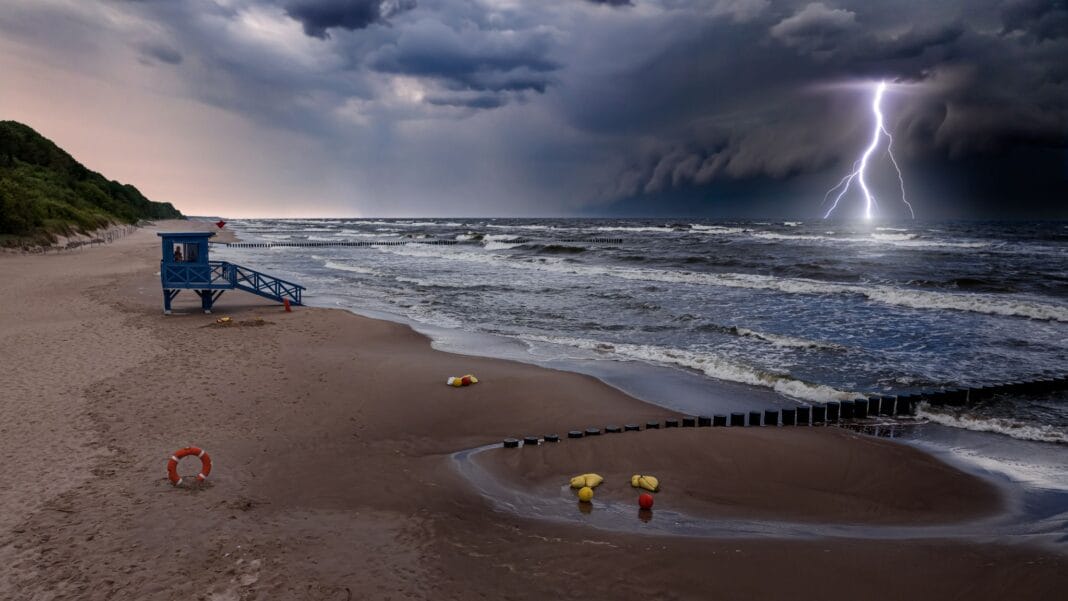Blasting waves and crackling thunder don’t discriminate. They can hit you when you least expect them. The blissful calm of a sunny day on your boat can turn into a nightmare in seconds.
Those who live in Florida know how quickly skies can darken, and how ferocious winds can send waves soaring.
Boats are incredibly good conductors of electricity, making them prime targets for lightning strikes.
Unfortunately, there is no way to completely protect your boat from its raw power–but there are ways to prepare for the worst should you be caught in a storm at sea.
But fear not, dear sailors! There are ways to prepare for the unexpected and ride out any storm that dares cross your path.
Follow these safety protocols to keep yourself and loved ones safe amidst nature’s fury.
Knowledge and Heed Warnings
A thunderous roar rips through the air, accompanied by a blinding bolt of light.
If you have a cabin on board, make sure all doors and windows are closed to prevent water entering.
If not, head towards the central portion of the boat and avoid any exposed metal or electrical components.
Fishing rods should be kept far away as they make tempting lightning magnets.
In this tumultuous battle between man and nature, knowledge is key; heed her warnings and stay safe during a thunderstorm.
Strap On Your Lifeline
You must never forget the importance of having life jackets on your boat–they could one day save a life.
Ensure that everybody has their own, and if a thunderstorm strikes, make sure all passengers put them on immediately. Keep limbs and extremities inside the boat at all times.
Try to keep from using electrical equipment or appliances onboard. Bring down any and all antennas.
If you’re jet skiing or swimming, cease activities when lightning is near And whatever you do, don’t enter the water.
In the case of an emergency or lightning strike, use your VHF radio to call for help.
Refer to Post-Storm Guidelines
After a thunderstorm, it’s crucial to wait for a safe interval before getting back on the water.
The 30-minute rule is a widely accepted standard; it advises waiting for that long after the last sound of thunder before resuming boating activities.
This gap ensures that the storm has moved far enough away to reduce the risk of lightning strikes, which can be extremely dangerous on the water.
Install Protective Systems
The Lightning Grounding Protection System works tirelessly, channeling away the dangerous lightning strikes from your boat.
A shield that is keeping you and your passengers safe in the danger zone of the thunderstorm.
Furthermore, its valuable protection ensures that all sensitive equipment on board is secured from harm’s fury.
Investing in such a system can be considered essential for those who often sail through turbulent waters.
Final Thoughts
While boating can bring unexpected challenges, being well-prepared can help you navigate through sudden storms.
By following these safety protocols and equipping your boat with necessary systems, you can ensure a safer and more secure experience for everyone onboard.
Remember, respect for nature’s power and preparedness are the sailors’ best tools in facing the tempest’s surprise


